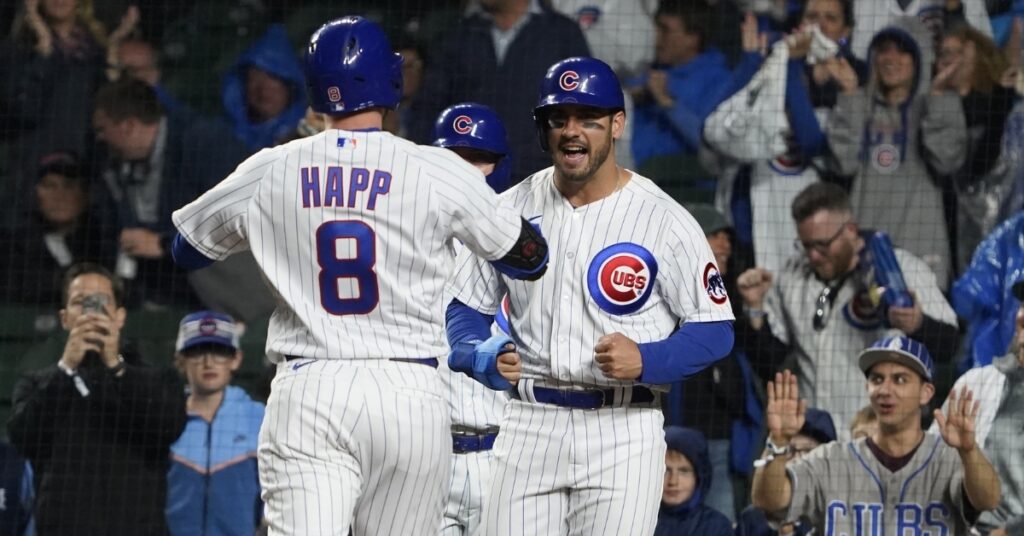The matchup between the New York Mets and the Chicago Cubs is always an exciting event in Major League Baseball. Fans and analysts alike closely follow the Mets vs Chicago Cubs match player stats to gauge performance, predict outcomes, and celebrate standout performances. In this article, we will delve into the essential player statistics for this matchup, including batting and pitching stats, to provide a complete picture of what to expect from this exciting baseball clash.
Key Player Stats for the Mets vs Chicago Cubs Match
Understanding the Mets vs Chicago Cubs match player stats involves analyzing various statistics from both teams. Here, we’ll cover the key player stats that are crucial for assessing each team’s strengths and weaknesses.
Batting Stats
Batting Average (BA): This statistic measures a player’s success rate in hitting the ball. It’s calculated by dividing the number of hits by the number of at-bats. A higher batting average indicates better hitting performance.
- Mets Batters: Key players like Pete Alonso and Francisco Lindor often lead the Mets in batting average. Their performance can significantly impact the game.
- Cubs Batters: For the Cubs, players like Kris Bryant and Javier Báez are typically among the top hitters. Their batting stats are crucial for their offensive success.
On-Base Percentage (OBP): This stat measures how frequently a player reaches base through hits, walks, or being hit by a pitch. It’s an important indicator of a player’s ability to contribute to the team’s offense.
- Mets Players: Look for high OBP from Mets players like Jeff McNeil and Brandon Nimmo.
- Cubs Players: For the Cubs, Anthony Rizzo and Ian Happ are known for their high OBP.
Slugging Percentage (SLG): This statistic reflects a player’s power-hitting ability, showing the total number of bases a player records per at-bat. It is calculated by dividing total bases by at-bats.
- Mets Contributors: Pete Alonso, with his home run power, significantly boosts the Mets’ SLG.
- Cubs Contributors: Kris Bryant and Javier Báez often lead the Cubs in slugging percentage due to their power-hitting capabilities.
Pitching Stats
Earned Run Average (ERA): This statistic measures the average number of earned runs a pitcher allows per nine innings. A lower ERA indicates better pitching performance.
- Mets Pitchers: Jacob deGrom, one of the Mets’ ace pitchers, usually has a low ERA, making him a key player to watch.
- Cubs Pitchers: Kyle Hendricks and Yu Darvish are significant pitchers for the Cubs, often contributing to the team’s ERA.
Strikeouts (SO): This stat measures the number of batters a pitcher strikes out. A high strikeout count is often indicative of a pitcher’s dominance on the mound.
- Mets Strikeout Leaders: Jacob deGrom and Marcus Stroman are known for their high strikeout numbers.
- Cubs Strikeout Leaders: Cubs pitchers like Yu Darvish and Craig Kimbrel typically have high strikeout rates.
Walks + Hits per Inning Pitched (WHIP): This statistic measures the average number of walks and hits a pitcher allows per inning. A lower WHIP indicates better control and effectiveness.
- Mets WHIP Leaders: The Mets rely on pitchers like deGrom and Taijuan Walker to maintain a low WHIP.
- Cubs WHIP Leaders: For the Cubs, pitchers like Hendricks and Darvish are key in keeping their WHIP low.

Analyzing the Matchup: Mets vs Chicago Cubs
When analyzing the Mets vs Chicago Cubs match player stats, it’s essential to consider how these stats interact during the game. Here are a few factors to consider:
Offensive vs. Defensive Strength
- Mets Offense: With powerful hitters like Pete Alonso and Francisco Lindor, the Mets’ offense is geared towards high run production. Their success often depends on how well they can capitalize on scoring opportunities.
- Cubs Offense: The Cubs’ offensive lineup, featuring players like Kris Bryant and Javier Báez, focuses on power hitting and driving in runs. Their performance in getting on base and scoring runs is crucial.
Pitching Matchups
- Mets Pitching: Jacob deGrom’s presence on the mound can be a game-changer for the Mets. His ability to strike out batters and keep earned runs low often gives the Mets a competitive edge.
- Cubs Pitching: The Cubs’ pitching strategy involves utilizing pitchers like Kyle Hendricks and Yu Darvish to control the game and minimize scoring opportunities for the Mets.
Historical Performance
Reviewing historical player stats in previous Mets vs. Cubs matchups can provide additional insights. Look at past performances to see if any players consistently perform well against the opposing team.
Impact of Player Stats on Game Strategy
The Mets vs Chicago Cubs match player stats not only provide insight into individual performances but also influence team strategies:
Batting Strategies
- Mets Strategy: The Mets might focus on exploiting pitching weaknesses of the Cubs and capitalizing on high OBP to create scoring opportunities.
- Cubs Strategy: The Cubs may aim to use their power hitters to challenge the Mets’ pitchers and drive in runs early in the game.
Pitching Strategies
- Mets Strategy: The Mets’ pitching staff may use a strategy of high strikeouts and minimizing walks to neutralize the Cubs’ hitters.
- Cubs Strategy: The Cubs might focus on using pitchers with strong control to limit the Mets’ scoring chances and leverage their own offensive strengths.
Conclusion
The Mets vs Chicago Cubs match player stats play a vital role in understanding and predicting the outcomes of their games. By analyzing batting averages, on-base percentages, slugging percentages, and pitching stats such as ERA, strikeouts, and WHIP, fans and analysts can gain a comprehensive view of each team’s strengths and weaknesses. Keeping track of these stats not only enhances the viewing experience but also helps in appreciating the intricate dynamics of Major League Baseball matchups.



